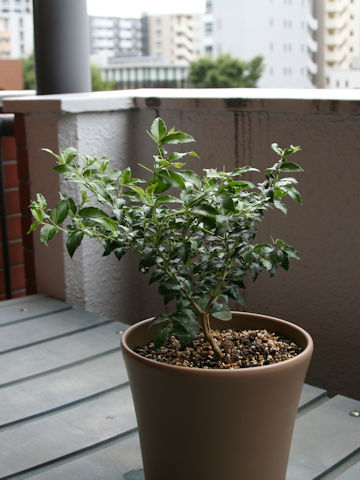
|
The Indian damnacanthus (Damnacanthus indicus) belongs to Rubiaceae (the Madder family). It is an evergreen shrub that is distributed from the Kanto region of Honshu west to Shikoku, Kyushu, and Okinawa in Japan, as well as in Taiwan and East Asia. It grows in dry forests in mountainous areas and is 30-60 cm tall. The trunk grows straight and the side branches spread horizontally with frequent bifurcations. The leaves are ovate and leathery, with a shiny surface. There is a pair of slender, 1-2 cm long spines in the leaf axils. It produces tubular, four-petaled white flowers, usually two each, in the leaf axils from April to May. The fruit is a spherical berry that ripens to red in winter. It is also known as "Ichiryo" in Japan. In Chinese, it is "虎刺" (hu ci), and in Taiwanese Chinese, it is "伏牛花".
Incidentally, "aridoshi" (Indian damnacanthus) is also used in ikebana as a lucky charm for the New Year, together with "manryo" (coralberry) and "senryo", a play on the words "senryo, manryo, aridoshi" (There's money, a thousand and one, all year round.).
|


